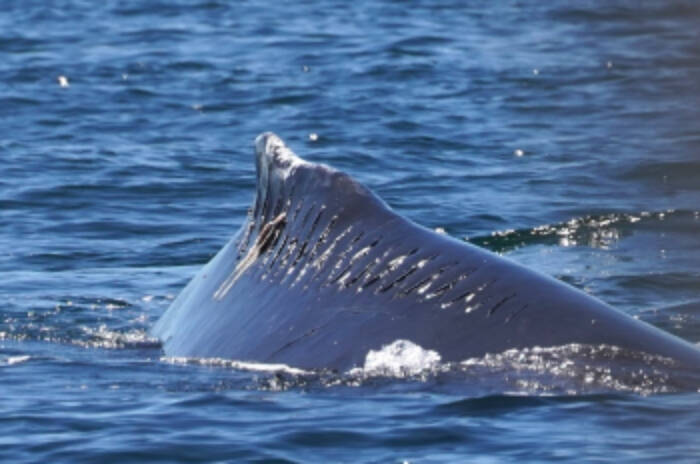Whale collisions on the North Coast of B.C. have some advocates concerned boat safety rules are not being followed, though marine mammals are not the only ones at risk.
The Department of Fisheries and Oceans (DFO) estimates there were 12,000 humpbacks off the B.C. coast in 2018. Between April 2020 and March 2021, 719 incidents — including marine life affected by entanglement, blunt trauma, or sickness — were reported to the DFO.
Last fall, several humpback whales were found dead near Prince Rupert and Haida Gwaii from entanglement or blunt force trauma, while three humpbacks have recently been found dead due to vessel strikes on the North Coast since July, according to Ocean Wise Conservation Association.
One of the Marine Education and Research Society’s (MERS) main worries is that many of the collisions that happen are not actually reported, meaning valuable research opportunities are lost, according to Jackie Hildering, communications director and co-founder of MERS.
“It is the law that people have to report it… because nobody wants to hit a whale, but by reporting, they’re actually helping,” she said.
Recent incidents are concerning to Karina Dracott, research manager at Ocean Wise in Prince Rupert, who pointed out that many whale species numbers have only recently recovered. Dracott added that there are already plenty of human-caused dangers facing whales, such as nets and underwater noise.
While whales are certainly at high risk, boaters with smaller vessels driving at high speeds can be in danger as well. Hildering said that one boater was paralyzed after colliding with a humpback off the coast of Haida Gwaii, while others have been severely injured from encounters with humpbacks.
“I think for smaller vessels there’s a really big incentive to do the right thing and that is avoiding getting hurt yourself,” she said. “There is somebody who is paralyzed… someone had to get reconstructive facial surgery.”
Dracott agreed that the best thing the public can do is to report boat strikes so that crucial research can be carried out.
“The big caveat is that, unfortunately, a lot of the time the ship strikes go unreported and then we don’t really understand the full impacts that they have on these animals,” she said.
When humpbacks arrive in the North Pacific, they are frequently near the surface for feeding or resting, making them more vulnerable to boat collisions, according to Hildering.
Dracott said spotting whales can also be extremely difficult when out on the water, and there’s no simple solutions or convenient tricks.
“Some maybe think that you might be able to detect a whale on radar, for example, but that’s not something that’s generally true,” Dracott said. “Or being able to tell whales apart from other things in the water, that’s really tricky because these whales are sometimes resting right at the surface.”
A vast migration path sees humpbacks usually travel from the warm waters in Hawaii and Mexico, where they rest in the winter to mate, then move north to the cooler waters of B.C. and Alaska. Humpbacks returning to feed in the area are key to the local ecology, according to Hildering.
“Humpbacks are back, they are a game changer, they need to feed here. This is where the richness is,” she said. “They are doing amazing things for us by pooling at the surface and increasing the amount of plankton so there’s more carbon dioxide absorption, all these amazing things.”
Seven knots is considered a safe speed for recreational boaters in known whale hubs, while for large vessels, 40 knots-or 26 kilometres an hour-has been found to greatly increase risk toward marine life, according to Hildering.
Local industry needs to ensure marine mammal safety while it continues to expand operations, Dracott said.
“This is one of the fastest growing ports in the sense that we’ve got a lot of industry increasing. With that, we’re going to see vessel traffic increasing as well,” she said. “So it’s important that we are proactive in some of these mitigation measures and would look to the port to lead by example and recommend possible slowdown zones.”
The Prince Rupert Port Authority did not respond in time for publication, though its website said it works with Ocean Wise and DFO to report sightings of mammals, minimize collisions and mitigate underwater noise caused by the port.

